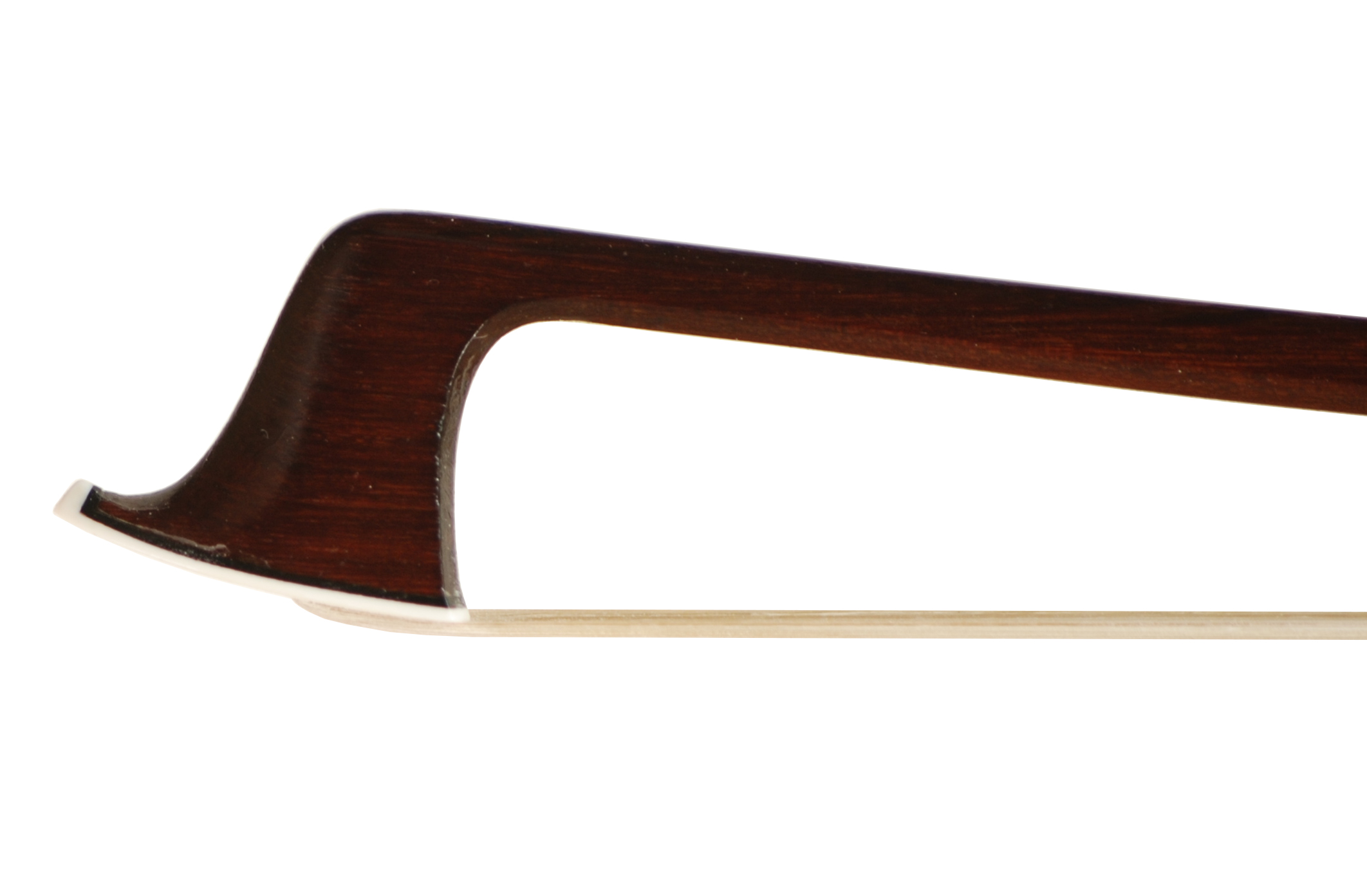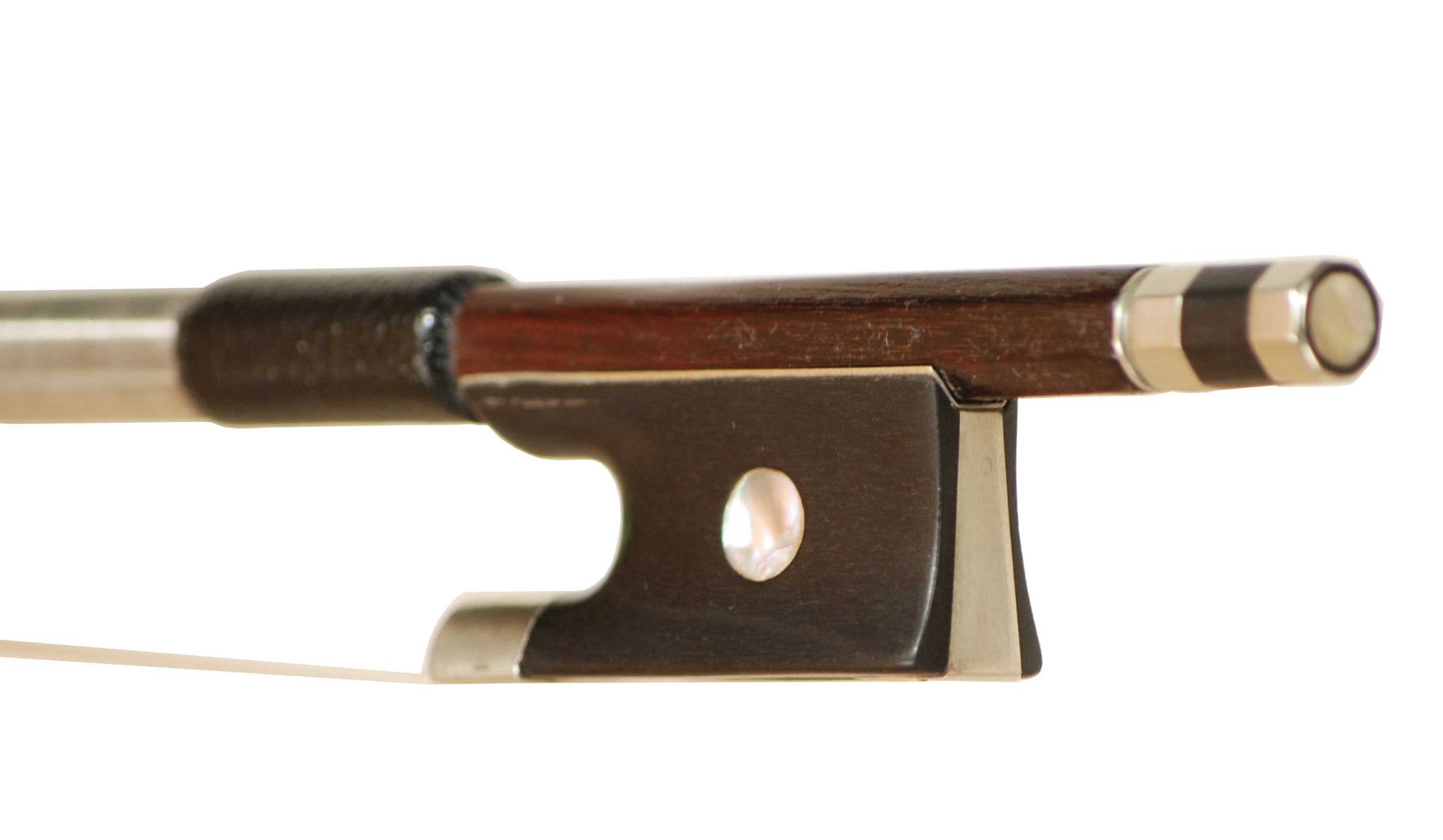Illegible Stamped German Violin Bow Late 19th Century – GORGEOUS BOW!! – CURRENTLY OUT ON TRIAL –
$1,395.00

This is a restoration of an older German violin bow I have had in my collection since the earl 1980’s. Covid time allowed me many hours to work alone, pulling and reviewing all my bows and prioritizing the collection of hundreds of sticks I just never got to. As a young guy I lived and breathed baseball, umpiring, and all things violin. I was totally into instruments and bows and with my dad, I spent many weekends collecting and purchasing string instruments in the New York/New Jersey area where I grew up. This bow has been dormant for over 40 years sitting in my many boxes of bows. I’m now getting to these sticks and having a blast bringing them back to life.
Germany has a long tradition of making violins and bows that goes back over 400 years. Most German bows were made in the a few traditional centers, Mittenwald, and the Markneukirchen/Klingenthal central eastern region near the Czech border. We offer a beautiful and fabulous older pernambuco violin bow made I believe in one of these regions of Germany. My educated guess on the violin bow is that it is stamped L. BAUSCH. Ludwig Christian August Bausch senior (1805-1871) could have been the maker and made late in his life. The stamp is very hard to read even under loupes and great photography. I can’t make it out 100% so I went conservative and called it a German bow. The entire bow more than lightly suggests it is a Bausch. The stick and frog have hallmarks of Bausch: a one-piece heel with pin work to hold the heel and lining in place, a handmade nickel frog with single mother-of-pearl eyes, and a larger central ebony ring on the three-part button. The frog and endscrew are original to the bow. This bow is high on my scale of quality. Bows not branded with the origin of country was a trait that was left off bows even up to the 1890’s. There were laws that went into effect in 1887 by Britain to try to curb that. Many workshops simply did not place their names on the bow as well as leaving off the country origin.
This gorgeous bow is in fantastic condition. I call it a sleeper, made in the late 19th century. I use the term sleeper because the bow has great performance and high craftsmanship, but I can’t make out the actual brand. The bow shows a little natural playing wear, which is a great sign to see. It is octagonal section, dark choice wood, and nickel fittings. The bow has been given it a new facial bone tip, new nickel silver winding and leathers. I characterize the bow as firm and well thought out in its layout. The stick is thinner than many bows, with denser wood, older pernambuco specie in its make up. That means the wood is choice even for its time. I love it. It is a well-made high-quality stick. I went the extra mile on the restoration because it deserved it. This bow is ready for another player to enjoy. If I could pinpoint the workshop and the exact maker this bow could go for much more money.
Weight fully haired 59.3 grams






